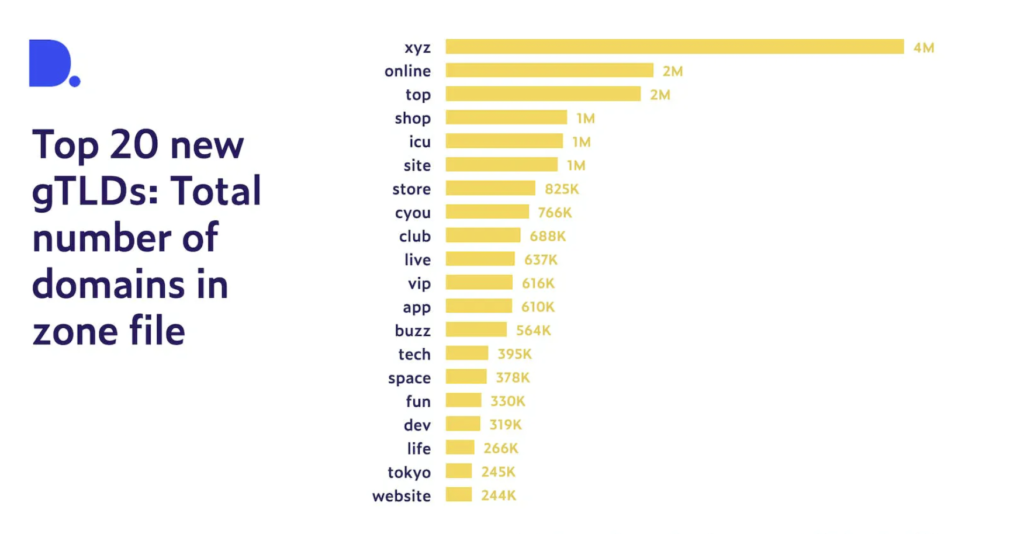What are new gTLDs?
For those who don’t have a technical background or are not from the domain name industry, a global Top Level Domain or g’TLD is what comes after your brand in a domain name., such as .com, .net, .info, etc. Before the new gTLDs launched, there were about 22 gtld domain name spaces (the OGs), and many argued that consumers did not have enough choice. This is where the idea to expand the number of domain name spaces available took hold, and in 2012, ICANN launched the New gTLD Program, where any organisation could apply for a new gTLD, as long as it complied with a series of criteria established by ICANN. Since then, the DNS has expanded to more than 1200 gTLDs with domain name from .sydney to .physio to .xyz launching.
How popular are the new gTLDs?
Dataprovider.com looked at the question, how are new gTLDs used and how much traffic do they attract? and dived into their deep domain name and DNS data to made some interesting discoveries. Currently there are 1,241 active new gTLDs with some spaces like .xyz attracting over 4 Million domain name registrations, but are any of these domain names resolving? or put it in another way, are they contributing to our digital ecosystem with value-adding content?

What the study found was that the quantity of new gTLD registrations doesn’t necessarily translate to the number of active websites. Image one below shows the top ranked new gTLDs by the number of domain name registrations. .XYZ ranked number one because they were given away for free or for very low fees, yet only 28% of these domain names had moderate traffic or higher, and ranked 13 in terms of reasonable use. Interestingly, Domain Tools ranked .xyz, as one of the worst offending domain name spaces for Malware, stating “your reputation in the infosec community is what it is for a reason. In the Malware category, we observed over 323,000 domains in .xyz, a significant uptick from its previous showing of a still-substantial ~207,000.”
New gTLDs by Traffic
looking solely at the total number of domains listed in the zone file doesn’t reveal whether the domain is actually associated with an active webpage. When we look at the percentage of domains that are associated with an active website, we see that among the largest new gTLDs, .online, .tech and .store are scoring highest with respectively 41%, 40% and 37% of domains directing to an active website.
Going one step further, if we now exclude pages such as placeholders and parked domains, another reshuffle happens: while .online and .store still remain in the top three, .tokyo comes into second place with 22% of domains pointing to an active website that likely represents a site with individualized content or a business site. At the bottom of the range of the 20 largest new gTLDs are .buzz, .icu and .cyou. These new gTLDs have less than 13% of domains associated with an accessible webpage. At the very bottom, only 2% of domains listed in the .cyou zone file direct to a webpage that is active and not a placeholder.
Do new gTLDs have any value or do they just confuse consumers?
New gTLDs do present branding opportunities not otherwise available in traditional gtld domain name spaces such as .com, but our experience is that when a brand uses a domain name space that consumers are not familiar with, their customers can be easily tricked through lookalike new gtld domain names. For example, if a brand is running a website called www.widgets.store, a scammer could use a similar new gtld domain, for example widgets.online to trick customers into believing they are dealing with the legitimate brand. Consumers get .com, they get .com.au but really have no idea about the new gtld programme, and bad actors do take advantage of that ignorance and confusion.
brandsec
brandsec is a corporate domain name management and brand protection company that looks after many of Australia, New Zealand and Asia’s top publicly listed brands. We provide monitoring and enforcement services, DNS, SSL Management, domain name brokerage and dispute management and brand security consultation services.
